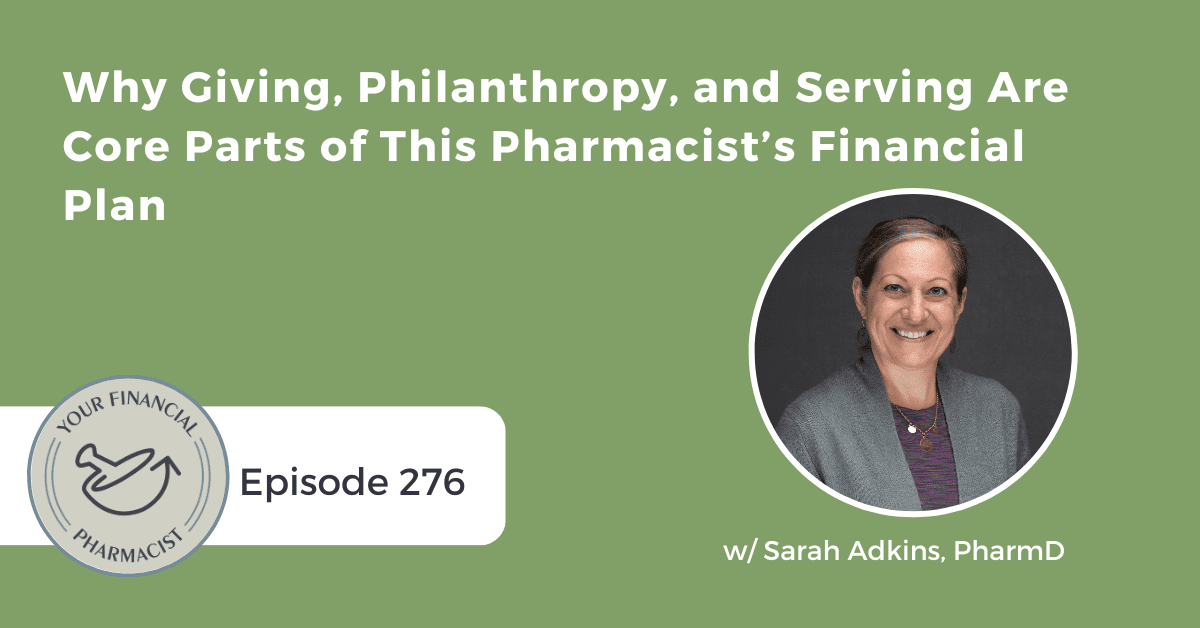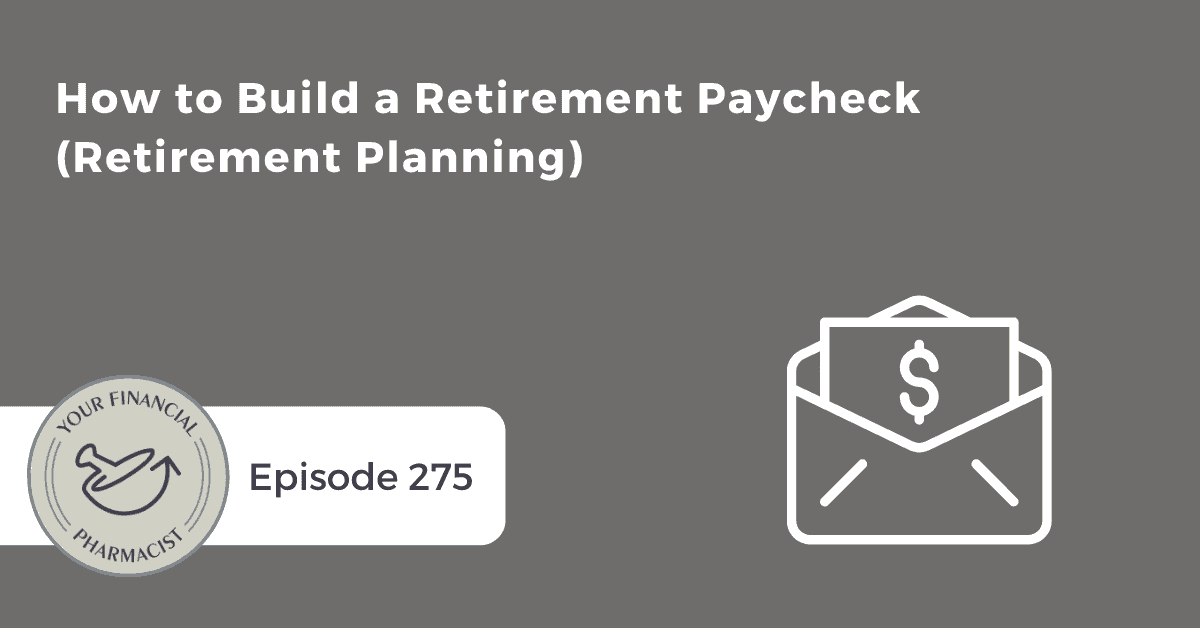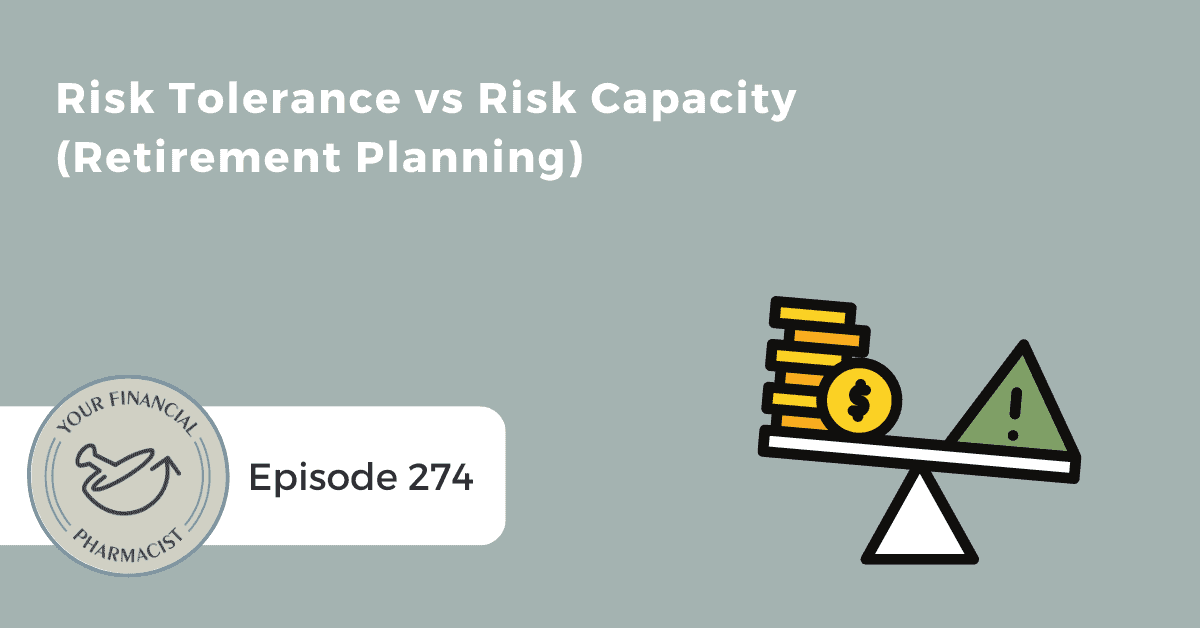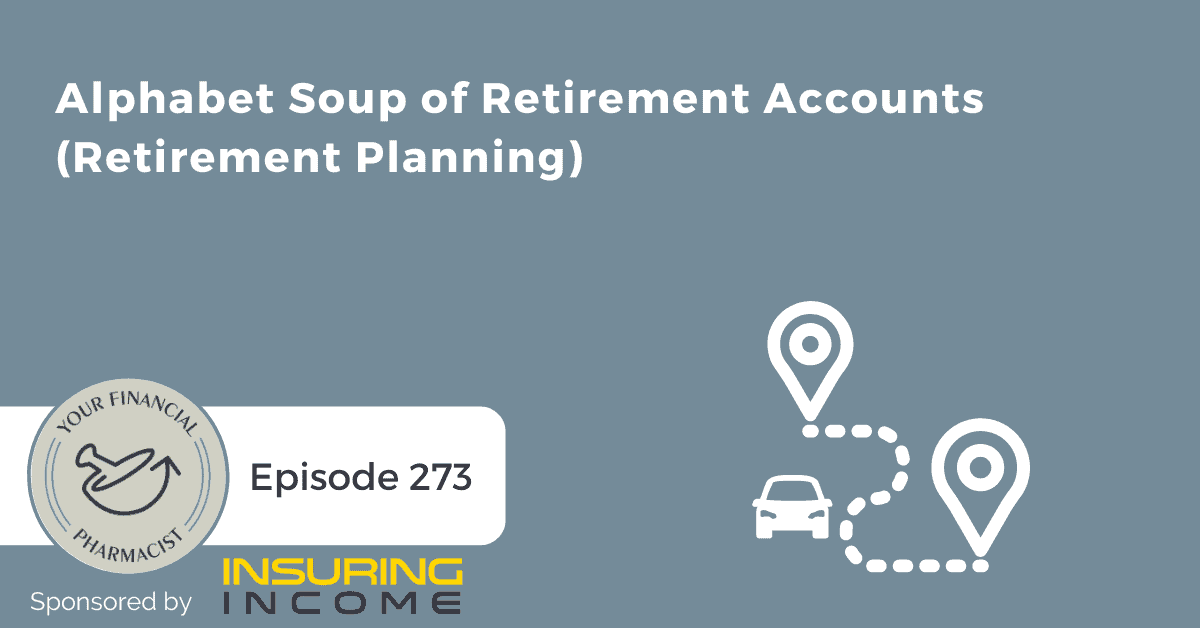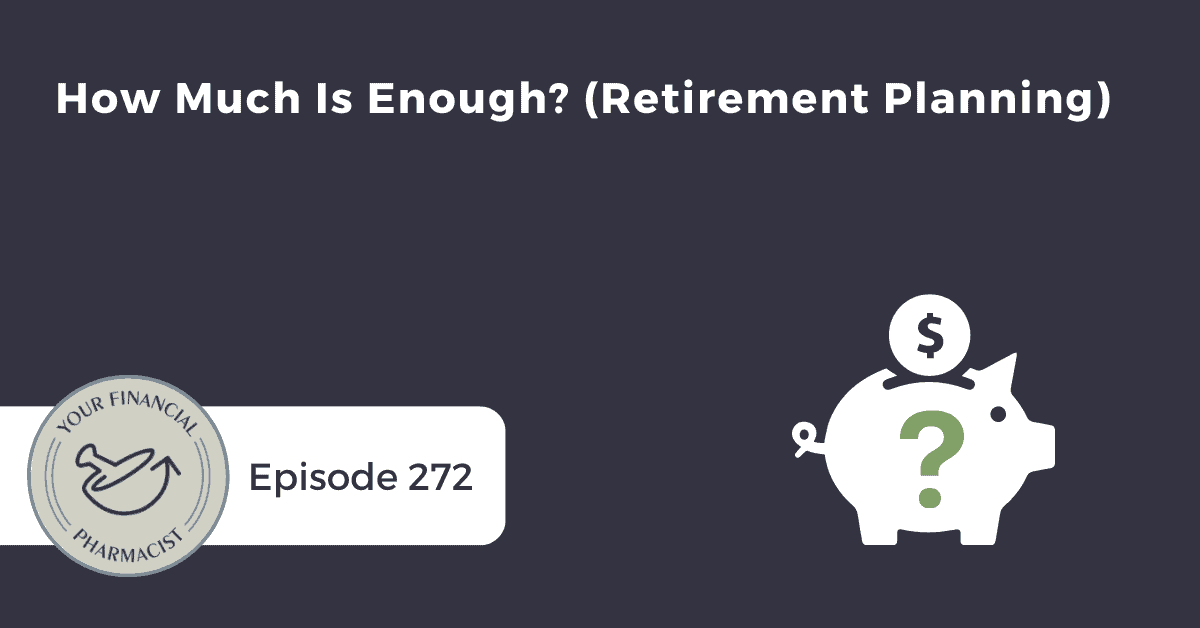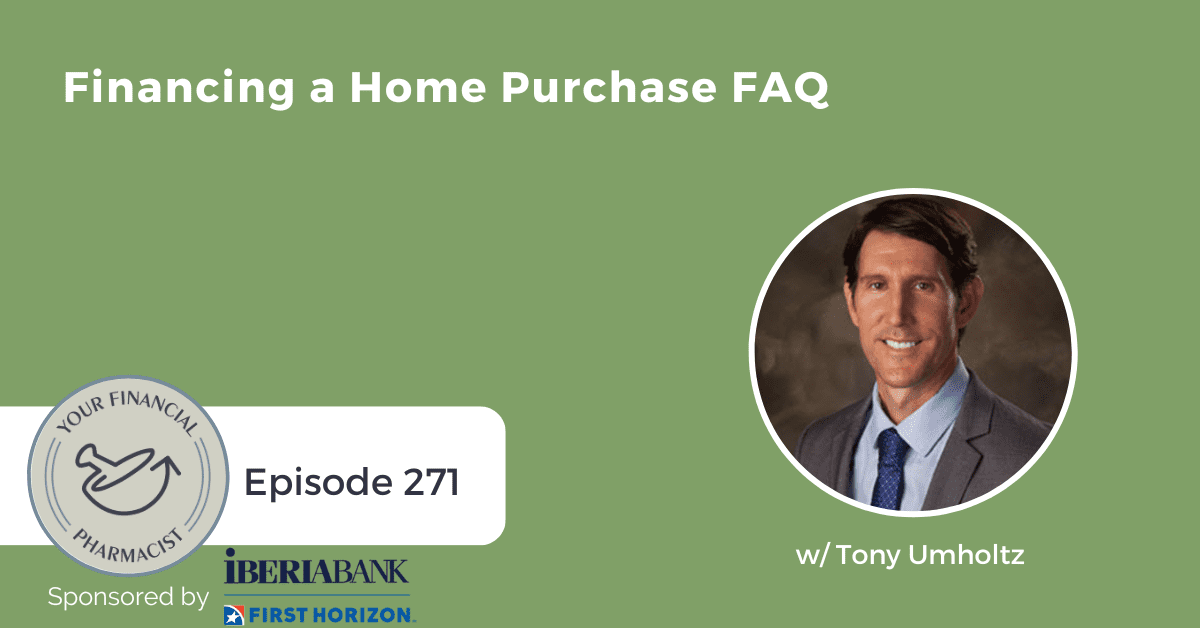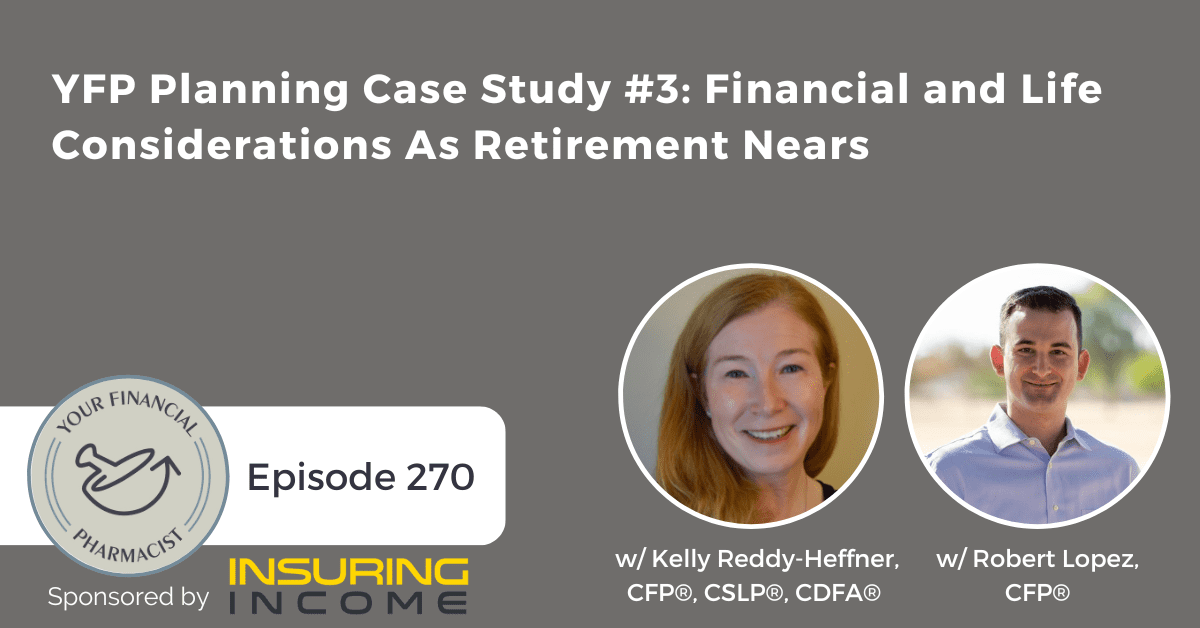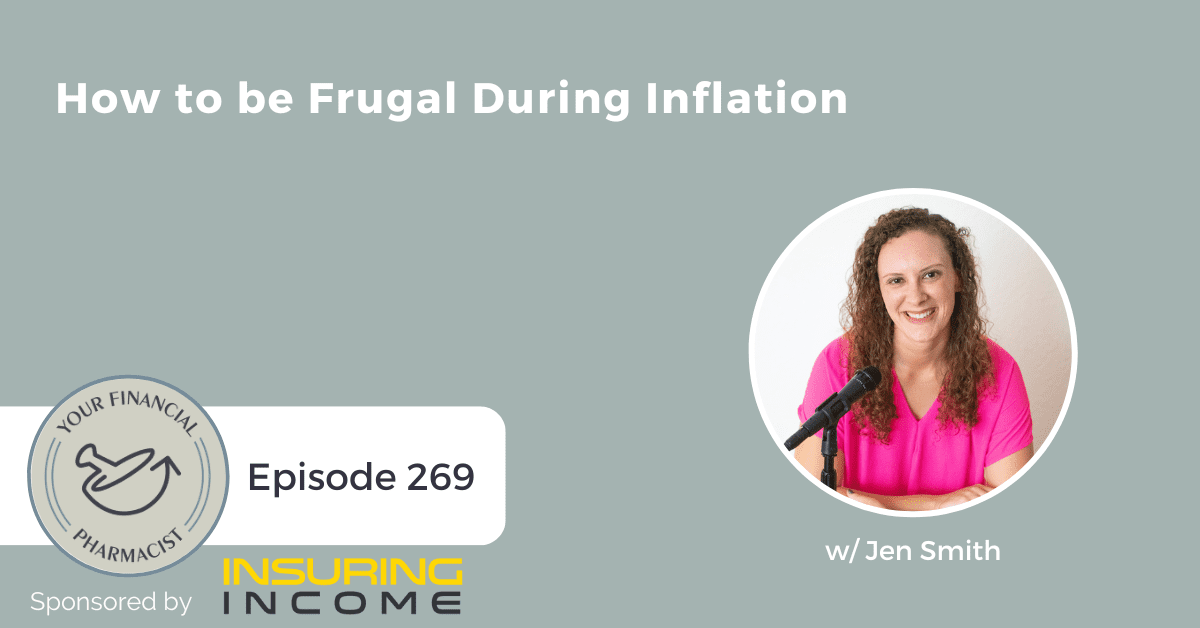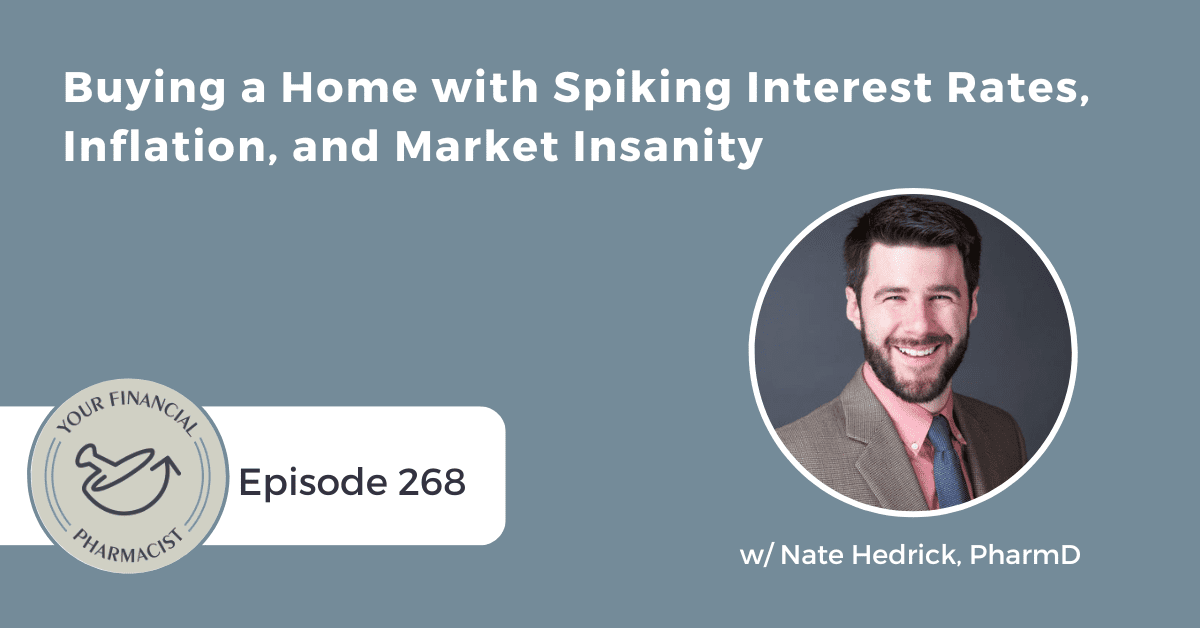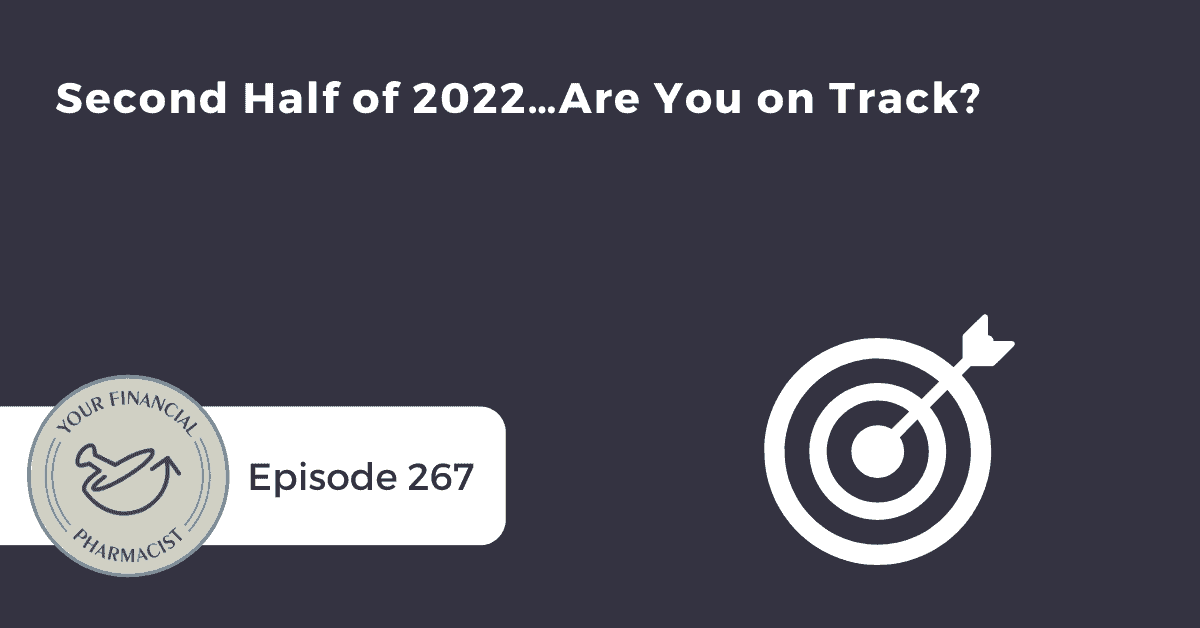Why Giving, Philanthropy, and Serving Are Core Parts of This Pharmacist’s Financial Plan
Sarah Adkins, PharmD, discusses how and why she started a non-profit pharmacy, why giving and philanthropy are a core piece of her financial plan, and how pharmacists can get involved using their expertise to help others.
About Today’s Guest
Sarah Adkins is a pharmacist and a native of Athens County, Ohio. Sarah attended Albany Elementary through the 8th grade. She moved with her family into the city of Athens and graduated from Athens High School in 1993. She attended the University of Toledo and graduated in 1998 with a Bachelor of Science in Pharmacy. She worked for Meijer Pharmacy in Northwest Ohio for two years after graduation. She then moved to Columbus, Ohio, and worked for Medco Health Solutions as a Customer Service Pharmacist, Managed Care Pharmacist, Supervisor of Physician Service Center, and then Knowledge Manager of Medication Therapy Management. She attended The Ohio State University College of Pharmacy (OSU COP) and completed her Doctor of Pharmacy in June of 2010. She moved back to her hometown of Athens, Ohio in 2011. She completed a PGY 1 residency in a collaborative agreement of clinical and academic practice with OSU COP and Ohio University Heritage College of Osteopathic Medicine (OUHCOM). After the residency, Dr. Adkins advanced her residency into a full-time shared position with OSU COP and OUHCOM where she has worked for the past 10 years. She precepts fourth-year Ohio State pharmacy students on rotations. She had the vision to build a non-profit pharmacy for the community in southeast Ohio. She now serves as the interim Executive Director of Rising Suns Pharmacy. She also spends clinic time with OhioHealth Family Practice residency clinic and partners with the Ohio University Heritage Community Clinic. She teaches pharmacy sciences at OUHCOM and Ohio University College of Health Sciences and Professions (CHSP). She is passionate and dedicated to her communities in Appalachia, Ohio, Southeast Ohio, and Athens.
Episode Summary
This week, YFP Co-Founder & CEO, Tim Ulbrich, PharmD, is joined by Sarah Adkins, PharmD. Sarah is a pharmacist with over 20 years of experience, including time spent in community practice, managed care, ambulatory care, and academia. Sarah shares the start of her vision of a non-profit pharmacy, her passion and dedication to providing healthcare services to communities in Appalachia, Ohio, Southeast Ohio, and Athens, and why giving is a core part of her financial plan.
In 2011, after spending time at the free clinic at Ohio University and touring the Charitable Pharmacy of central Ohio, Sarah set her sights on bringing a non-profit pharmacy to Southeast Ohio, where there is a great need. After spending years expanding existing services to the area and vying for buy-in from colleagues and vested parties, Sarah took the reigns and got started. In 2019, the board for Sarah’s non-profit pharmacy was formed, 501c3 status was attained, and with diligence, the non-profit pharmacy garnered $110,000 in grant funding for startup costs. In the Spring of 2022, Rising Suns Non-Profit Pharmacy officially launched and to date, has been able to fill over 400 prescriptions and over $130,000 in drug costs. Sarah shares how with competing interests for both her time and money, she makes giving a priority and how other pharmacists can do the same.
Links Mentioned in Today’s Episode
- YFP Planning: Financial Planning for Pharmacists
- Schedule a free Discovery Call with YFP Planning
- Happy Money: The Science of Happier Spending by Elizabeth Dunn & Michael Norton
- Rising Suns Non-Profit Pharmacy
- Your Financial Pharmacist Disclaimer and Disclosures
Episode Transcript
[INTRO]
[00:00:00] TU: Hey, everybody. Tim Ulbrich here, and thank you for listening to the YFP Podcast, where each week we strive to inspire and encourage you on your path towards achieving financial freedom.
This week, I had the pleasure of sitting down with a friend and colleague, Sarah Adkins. In addition to being an incredible human being that has impacted so many, Sarah has over 20 years’ experience in the profession of pharmacy, including in community practice, managed care, ambulatory care, and academia. She currently works in a shared position between Ohio State University College of Pharmacy and Ohio University College of Osteopathic Medicine.
She also spends clinic time with OhioHealth Family Practice Residency Clinic.
In 2020, she realized the vision to build Rising Suns Pharmacy, a nonprofit pharmacy for the community in Southeast Ohio, where she serves as the Interim Executive Director. During the show, we talked about how and why she started a nonprofit pharmacy, the origins of her passion and dedication to provide health care services to communities in Appalachia, Ohio, Southeast Ohio, and Athens, why giving and philanthropy are a core part of her financial planning goals, and how other pharmacists can get involved in using their expertise to serve others.
Before we jump into the show, I recognize that many listeners may not be aware of what the team at YFP Planning does in working one-on-one with more than 250 households in 40-plus states. YFP Planning offers fee-only high-touch financial planning that is customized to the pharmacy professional. If you’re interested in learning more about how working one-on-one with a certified financial planner may help you achieve your financial goals, you can book a free discovery call by visiting yfpplanning.com. Whether or not YFP Planning’s financial planning services are a good fit for you, know that we appreciate your support of this podcast and our mission to help pharmacists achieve financial freedom.
Okay, let’s jump into my interview with Sarah Adkins.
[INTERVIEW]
[00:01:50] TU: Sarah, welcome to the show.
[00:01:52] SA: Thanks, Tim. It’s good to see you.
[00:01:54] TU: Well, I am so excited for this interview. We had a chance to reconnect a few weeks ago, but we have known each other for a while. I think we’ve crossed paths initially through the Ohio State Pharmacy and Residency circles and through the Ohio Pharmacy circles. So excited to be able to share a little bit about your career story, the work that you’ve done to start a nonprofit pharmacy, Rising Suns.
Really, the theme of today’s episode is around giving and philanthropy and really just an incredible story of what you have done throughout your journey. So before we get into that, give our listeners some background on you. Where did you go to pharmacy school, and what really drew you into the profession of pharmacy to begin with?
[00:02:36] SA: Oh, that’s a great question. So I literally have wanted to be a pharmacist since I was in the second grade. I know it’s weird. That doesn’t happen all the time. I know. But my sister was ill. My sister had actually kidney failure as a young child, and I had allergies. So we went to the doctor a lot, and it’s funny because we used to go to the prescription shop in Athens, here in Athens, Ohio. When we would go in there, my mom would say, “You know what, Sarah? Pharmacy is a really good job for a woman. I think that’d be a great job for you. You like science. You like math. You can make good money. You can live independently if you needed to.” I was like, “All right.” So I was like, “Okay,” and that was like the second grade. So since the second grade, I have wanted to be a pharmacist. I ended up going to pharmacy school at the University of Toledo.
[00:03:24] TU: Go Rocket.
[00:03:25] SA: How about that? A lot of people forget that. Like they think I went to Ohio State. So I got my doctorate at Ohio State. But I did my undergrad at University of Toledo. Anyway, I went to UT and I graduated actually in ‘98. So even when I graduated at that time, I told my mom, I was like, “Meds are so expensive.” I was like, “People don’t have access to medications, and they’re so expensive.” This was in ‘98. This was a long time ago. I was like, “People are dying because it can’t get access to medicine. It’s only going to get worse.”
So I would say it even started maybe at that time. Anyway, I graduated in University of Toledo. I graduated there in ‘98. I actually worked for Meijer Pharmacy. I floated in Northeast – Excuse me, Northwest Ohio, around the Toledo area for a couple of years. Then I ended up moving to Columbus. I actually at that time worked for Medco Health Solutions, which is now Express Scripts. I did work there for around 12 years. I worked my way up.
During that time, I wanted something more clinical. So I went back to school, and I had an opportunity to get my nontraditional PharmD is what we called it. So I worked full-time, and I went and got my PharmD at Ohio State University. I graduated there with my doctorate in 2010. I wanted to teach and do something more clinical. So I needed to get my PharmD in order to make that happen. So that’s a little bit about me. I’m sure I’ve missed some things.
[00:04:48] TU: No, that’s great. I think that was one of the things I wanted to talk through for just another moment was that decision to go back and get your PharmD. I know there’s not many. I think there’s maybe just a couple out there now. The nontraditional PharmD programs at the time, Ohio State, had a distance-based program.
But big decision, right? You’re 10-plus years in your career. You’ve had experiences in community practice. You’ve worked your way up in managed care. Then you make this decision to go back to pharmacy school, plus residency, at Ohio State. So primary motivation around that was really that desire to teach and needing that door to open. Tell us more about that.
[00:05:22] SA: So I got kind of tired of what I was doing, and I think everybody does. I think we all hit that point when you just need to change. So I had been with Medco for a while and was looking for something more clinical. I was like, “I just really need something more clinical.” So I actually started looking for jobs and realized that my RPh, my BS in pharmacy was not going to get me something more clinical. So I started looking around and I thought, “I don’t think I’m going to be eligible for work in the jobs that I want without my PharmD.” So I started looking around, okay, what would it take to get the PharmD.
Actually, at the time, right, I think it was a good time then. Medco actually paid for 75% of my degree.
[00:06:05] TU: Wow.
[00:06:05] SA: So as I was – Yeah. It was kind of a no-brainer. I was like, “Okay, it’s going to be two to three years of nontraditional time, and I would get my PharmD at the end. It was only – I actually paid cash for it because I was working full-time and going to school, which when I was in my – I was in my early 30s, and I had a lot of energy then. I think I only got maybe like two to three hours of sleep at night.
[00:06:31] TU: Oh, my goodness.
[00:06:32] SA: I guess I was that dedicated. I would oftentimes fall asleep in my chair, listening to my classes. It was pretty funny. But, yeah, I wanted something more for my career, and I really loved teaching. I did a lot with the students and a lot of training and training a pharmacist when I worked at Medco and decided that teaching and something more clinical was definitely the way I wanted to go.
[00:06:53] TU: Those relationships at Ohio State, obviously, would continue to bear fruit to this day. I know you’re so well-admired among the faculty at Ohio State. Obviously, there’s been collaborations there that have happened since then. So tell us about that journey post residency and, ultimately, the doors that would open relate it to that passion around teaching and the work that you’ve been doing since then.
[00:07:15] SA: All right. So when I graduated from my PharmD, it was June of 2010, and I was struggling with what to do at that point, right? Do I stay with Medco? I’d actually talked to Maria Pruchnicki, who is faculty at Ohio State, and I said, “I still kind of want to teach. What should we do?” So she actually came up with this plan for me as, a pharmacist, as a practicing pharmacist, to be a teaching assistant at Ohio State. She’s like, “This is something I’ve wanted to try.” Like bring an actual pharmacist while they’re practicing. So that was the plan.
So in fall of 2010, I was supposed to be a TA for her class, just to see how this would go, and that was in Columbus, Ohio. So around about that time, I had a tragedy happen in my life and determined that I was not going to stay in Columbus after this happened. So I left Columbus, and I remember I just graduated with my doctorate. My hometown is Athens. I grew up here. So I said to Ohio State and I said to – I adore Ohio State. They’ve taken really, really, really good care of me. The people, they’re amazing human beings. So I said to them, I said, “Hey, I have to go home. Like I cannot stay in Columbus. And if there is anything you would like me to do there, I am happy to do that.”
I went to Ohio University because I knew people that worked at OU, and I said, “Hey, if there’s something you’d like me to do, I will do that. Otherwise, I’m going to dread my hair and become a barista and get some neck tattoos.” That was the other choice. So I don’t know if they didn’t want to see me with neck tattoos. I mean, I don’t know if that was what they were thinking about.
[00:08:59] TU: There’s still time, Sarah. There’s still time for your tattoos.
[00:09:01] SA: I know. Believe me, Jim. You know it’s going to happen someday. You’re going to be like, “What happened to you?” And I’m like, “Yeah, time for the neck tattoos.”
[00:09:08] TU: That’s right.
[00:09:11] SA: Anyway, so actually, Ohio State and Ohio University College of Osteopathic Medicine had actually been discussing having a pharmacist there already. But they couldn’t find someone to work there with the money that they were going to pay because at the time, pharmacists were making quite a bit of money. To be honest with you, I didn’t care. I should be more concerned about money than I am. I don’t care about it that much. It’s not a good thing I don’t think. Over the years, I’m like, “Sarah, you really should care more about it.” But I was like, “I didn’t care.” Especially at that time, like I had been through a lot and I just – All I wanted to do is keep life simple and maybe just teach a little bit and not lose my PharmD or not lose like the clinical education I received.
They worked it out, so I would have a part-time residency, and I would take students who were under rotation and expand practices in Southeast Ohio. If it worked, then we could talk about making it a full-time position. So it worked out great for both of us. Because if it didn’t work, they didn’t – It wasn’t something that they were all tied into. If it didn’t work for me, it wasn’t something I was tied into. So I ended up with a one-year residency program, a PGY1 in ambulatory care here in Southeast Ohio, where I worked at a free clinic that OU had, OUHCOM has, and was able to bring students down and started teaching classes at OUHCOM. So it actually worked out really well for everyone. I think it was sort of just meant to be, if I can say that.
[00:10:40] TU: For our listeners that are not in the great state of Ohio, just some more context, we have seven colleges of pharmacy here in the state of Ohio. There really is and has been a gap around a pharmacist presence, as well as opportunities for healthcare needs in Southeast Ohio. So OU College of Medicine, Osteopathic College of Medicine, doesn’t have a pharmacy, a PharmD program. So there’s just a really good natural alignment there in terms of Ohio State being able to expand its mission and its work. There wasn’t a competing college in the area. There’s a need for health care and a pharmacist services and presence in that area.
I think it was a really cool alignment of some mentors that you had through your journey at Ohio State, obviously, your passion for the work that you’re doing, and also just asking the question, right? So, hey, I’m going back home. I’m going to Southeast Ohio. Like if there’s an opportunity that we can collaborate on something, great. If not, that’s okay. But asking that question and seeing those doors open. Obviously, the impact that has been since then is a really cool story. All of the students, probably hundreds, right, if not thousands of students who precepted at this point medical pharmacy, that have been to be able to be impacted by this.
So 2011, you make the move back to Athens, and you have this idea. You have this vision to start a nonprofit pharmacy. We’re going to talk about that journey and really 10 years from idea to doors opening. But tell us more about the vision and why that came to be that you really saw this opportunity to open a nonprofit pharmacy in Southeast Ohio.
[00:12:15] SA: When I came down and was able to work at this free clinic that OU had started, I thought it was fantastic. So they had actually been operating this free clinic out of OU, out of the College of Medicine here at OU since like the late ‘80s. It actually had been going on for a long time, and I actually had not known about it. So when I came back and had this opportunity to work here, they had a mobile unit, so they could actually go out into the community. They had a really amazing program, and I hadn’t been here a week, seriously, like a week. I was like, “Okay. So you have this great program, but you don’t have access to medications.”
These patients would be eligible to come in and see the provider at no charge. Oftentimes, they would be able to get their lab work done either at reduced or no cost, depending on like the income that they brought in. They could even get hospitalizations or something done at the hospital if they needed to at low to no cost. But they had no access to meds. At the time, the clinic was actually contracting with a local pharmacy, which was good for the local pharmacy too.
But it was really the cost that the free clinic was paying for medications was pretty giant, and they still didn’t have access to a lot of brand name medications, a lot of newer meds. Most of the meds they were giving were on like the four-dollar list at the local pharmacies. Or they would sometimes purchase like vitamins and over-the-counter products they actually give to the patients. So it was just a huge gap, and I knew that when I had come here.
Shortly before I moved back to Athens, I had a tour of the Charitable Pharmacy in Columbus, which I didn’t realize at the time they had just opened. So that was just a few years before I moved to Athens, a couple years, actually, a year before I moved to Athens. Anyway, I had that tour at the Charitable Pharmacy. Then when I came to Athens, I was like, “Oh, my goodness. We need a Charitable Pharmacy.” That’s the bottom line. We need a pharmacy here to offer meds at no cost to the patients of the area because we had people who were working and weren’t offered insurance. Or their insurance costs were so high that they could not pay for medications on top of the insurance costs.
I also find it pretty frustrating that the patients who don’t have money don’t have access to the most clinically relevant medications at the time. I watch commercials, and I see commercials for Jardiance and all these great medications. I think, well, that’s really great for the people who can afford it. So I have a real problem with that of people not having access to the meds that are clinically the most relevant and the most helpful for them. I saw that gap in care and I thought, “Oh, the Charitable Pharmacy, we need one of those here.”
So it truly started probably in 2011. About the summer of 2011 is when I started looking for how do I do this. Like what are our next steps to getting a free pharmacy in Southeast Ohio? So that’s where it started.
[00:15:18] TU: So one of the things I always like to ask folks that have started something, that could be a business, for-profit, nonprofit, is it’s one thing to have a bold vision. It’s a huge step. It’s another thing to actually take action and take that first step without getting paralyzed by all of the things that can happen between idea. I want to open a nonprofit pharmacy to actually being able to dispense that first medication, right? Probably arguably more complex and most ideas folks have when you think about the landscape of nonprofits, when you add on top of that, some of the regulatory aspects of obviously dispensing medications and pharmacy and funding and all these things.
That first step I want to focus on because that’s the piece where often I think folks get hung up on is I’ve got this vision. I’m passionate. I’m excited about it. I can see potentially that first person walking in the door. We’re making a difference in the community. Oh, my gosh. There’s a lot that needs to happen between now and then. So tell us about that first few months or years, as you think about the things that needed to happen and how you were able to get momentum and take those first few steps forward.
[00:16:23] SA: You and I had talked about this prior. But when I started, when I saw that, that we needed that in 2011, I reached out to a lot of people that I knew or thought may be able to assist or when to expand or connect with Southeast Ohio. So I reached out to a lot of people over that period of time. From around 2011 to around 2019, I connected with a lot of people, trying to not recreate the wheel but expand other services to Southeast Ohio region.
I wasn’t necessarily told no directly. But I was not – It wasn’t something that they saw in their vision as what I was told from several people. Either that or I would just be ignored, which I’m going to say that I think I knew that it was such a need down here. I guess I expected more, and so I got really frustrated. I’m going to tell you, I think the first step was me saying, “You know what? I’m finished with this. I’m going to do it myself. If no one’s going to help me –” Kind of like a child, I guess, you would say. Like, “If you’re not going to help me, I’ll just do it myself.”
Which I think that a lot of people, even in Southeast Ohio, who I had been working with at the time, I had worked a lot with the Athens Foundation. I want to say that they have been incredibly supportive of me and my journey. Anyway, they were kind of the first step for me, and I had worked with a woman named Susan Urano from the Athens Foundation, who I think she thought I was a little bit crazy, but yet wanted to watch what it looked like. So she had been incredibly supportive of me getting started.
The moment I said, “You know what? I’m finished. I’m going to do this myself,” I had several providers in the area who were also motivated to make this change. One of my closest allies in this has been a physician named Marc Richards, has been incredibly supportive on this. He saw the vision with me, so he was really helpful. So I think it was finding that small group of people who would also carry that torch with me, and we formed a board.
So the first thing we did was form a board in fall of 2019. That is sort of where we started. It consisted of physicians. It consisted of a professor I had worked with at the College of Chemistry, who was – He worked in the pre-pharmacy program here. So Ohio University actually has a pre-pharmacy degree that they can get who we’ve partnered with Ohio State over the last several years. We’ve had a lot of people graduate from both OU and then go to the College of Pharmacy at OSU.
But he sat on the board. I had a nurse practitioner on the board from the free clinic and some local people on the board. So we just started. We just literally all got together, sat down, and we just started. We had a lawyer, a wonderful lawyer. He’s been fantastic, Ryan Law Offices, and he’s been phenomenal. So anyway, I think it was just starting with kind of a handful of people.
[00:19:18] TU: I think that the two things to take away from there are a vision that obviously, number one, resonates. But you’re also – I think that naive optimism is a good thing when you’re getting – I literally do. I tell it – My wife and I talk about this all the time. Like if there is not some level of like naive, bordering, reckless optimism, like we’re probably not going to persist through, right?
I mean, again, 2011, you have the idea. 2019, you formed the board. It’s an eight-year stretch of time, right? It’s incredible to be able to then get to 2021. We’ll talk about that, 2022, where you’re actually able to obviously operate and have an impact in the community. So the board in 2019, and so I sense a compelling vision there. Then obviously, the second piece I was going to mention is that you’ve got people that join you in that vision. So I think that’s an incredible aspect of a leader is, number one, can we cast a vision? Number two, can we get other people involved and excited and on fire about that vision as well?
For those that are thinking about that, “Hey, I’d love to start a foundation or nonprofit,” anyone who Googles start a 501(c)(3), it’s – You’re about to webpages, and you’re like, “Maybe this isn’t for me, right?” That board, I suspect, was an essential step in the nonprofit status. Is that correct?
[00:20:36] SA: Right, absolutely. So we had to have that to get our status. Yes. To file the papers.
[00:20:41] TU: So you’re navigating. It sounds like with an attorney’s effort, you were able to navigate through that 501(c)(3) status for the pharmacy yourself.
[00:20:48] SA: Yes. Yup. So we had help with the law office. Yeah. Everyone signed the board. Everyone signed the paperwork. We had – One of the people on the board actually donated. I think it was $250 to submit that 501(c)(3).
[00:21:02] TU: Okay. So take us from that moment. 2019, you have the board, and then you eventually would have a full launch in 2022. But obviously, you mentioned to me before we recorded that you had a soft launch to your prior. Of course, there’s the pandemic through all of this as well. So tell me about actually getting to that point of we’re opening for business and then, ultimately, what the service looks like in terms of hours of operation and what we’re offering. Then we can talk about the future going forward.
[00:21:31] SA: Okay. That sounds good. So 2019, we got the board formed. Once we had the board, we also realized – So with the State Board of Pharmacy, Tim, you had mentioned earlier, there’s a lot of regulatory issues. Even just starting a pharmacy, there’s quite a few checkboxes that you have to fill in before you can move forward, which is fine. It’s just part of pharmacy and part of the world we live in. It’s fine.
So the way we’d had the outlook with the board and myself, we looked at it like we’re going to take one step. The only thing that kept going through my head this entire time is the journey of 1,000 miles begins with a single step. The journey of 1,000 miles begins with that single step. I had to say that over and over and over again to myself. Every time we take two steps forward, we would have one step back and two steps forward and one step back.
I will say that I also feel that there are funders in and around the state of Ohio who also saw the need for this. So once we got the 501(c)(3) status, we had to have that first, right? The second thing we had to have was an address. We couldn’t do anything without having an address, right? I said, “Okay. Well, then we need funding for rentable space. We have to be able to get a space. And what does that look like? And how much money do we have? And how do we get a rental space if we don’t have any money?”
When we talked earlier, I was thinking about people asking if they should do a nonprofit, and I would say don’t do it. I’m just kidding. I really am kidding. It’s truly taken a piece of my soul to work on this, and I keep waiting for that moment when it’s going to fly, right? When it’s going to like leave the nest and take off.
[00:23:04] TU: It’s coming. It’s coming.
[00:23:05] SA: I’m hoping, fingers crossed, fingers crossed. So anyway, I actually think the interesting thing with COVID is I actually think that we got a lot of grants because of COVID. I think it was actually a benefit to us, which you can say that, right? COVID was a benefit. But I actually believe we got quite a few grant opportunities because of COVID, and we actually received funding from the state of Ohio, from the Charitable Healthcare Network in the state of Ohio who does indigent funding. They gave us a nice amount of money that we could at least start to rent a space.
So we actually – Within the first year with a lot of effort from myself and a couple of the board members, we ended up getting around $110,000 in grant funding for startup costs. It was a lot of time and effort put into writing those grants and knowing who to contact and where to go. I mean, it literally took a year just for us to get the grant and the startup funding.
Then another year, as we purchased our equipment and software and computers and phone lines and Internet, and we had to have the state board come in and inspect, and then we had to – Once we got our pharmacist license approved, then we had to order medications and contact those people and make sure we had our terminal distributors set up and make sure they had their terminal distributors set up, right? Yeah. It was a long, long process.
We actually started dispensing in June of 2021 as a soft opening. I had been working with one of the – OhioHealth has also been an incredible partner for us. But I was working with the Ohio Health Clinic, and we sort of did a soft opening with them, just to make sure that we were able to fill prescriptions. We’re making sure our software worked, and people could get to us, and that our printer worked, and our labels worked, and all of our clinical information worked, and we were able to get drugs. It was kind of a long process.
Then we did have a final – We were able to hire a pharmacist with a grant that we received. We hired her part-time, and I’m going to say bless her heart because she literally is working for us for not a whole lot of money for as much as pharmacists get paid, and she is one dedicated, amazing human being. Kendra Donnelly is working for us, and she actually is also from Southeast Ohio. She’s an amazing human, and she literally took a step out to come and work for us. So I appreciate her a lot. She started in November. With her help, we were able to do a grand opening April of 2022.
So our hours right now are kind of wishy-washy. Actually, I’m still working another full-time job. I’m still teaching. I still do ambulatory care practice with OhioHealth. So I tried to come in a day and a half a week. Kendra fills in the blanks with the other ones, but we share her with Kroger Pharmacy. To date, though, we have dispensed over 400 prescriptions, and we have dispensed over $130,000 in drug costs. So we have done it. We are here. We are here. I said it’s miraculous and yet terrifying. I said I’m terrified, terrified, and yet incredibly excited.
[00:26:02] TU: One, it’s incredible to hear the implementation, right? We talked about the journey from idea to doors opening, and now we’re obviously starting to talk about the fruit of the medications that have been dispensed, the value of that. To me, as I hear this, and maybe you don’t feel this in the moment, but as I hear it from an outsider, it feels like the iceberg under the water work has been largely done. Now, there’s really an opportunity to scale and to have the impact that your vision has had because of all the work that’s been done over the last 10 years.
Grants are great, but they take a lot of time and effort, which is why we need Joe Burrow to step up and write –
[00:26:41] SA: Yes. Come on, Joe.
[00:26:43] TU: Come on, Joe. We need that check. Let’s do this.
[00:26:45] SA: One cool mill. A cool mill, Joey. Come on buddy.
[00:26:47] TU: That’s all we’re asking for. Yeah. It’s that gold necklace, right? That’s all we need.
[00:26:51] SA: That’s right. That’s right.
[00:26:53] TU: When we talked a few weeks ago, I really sense that giving. Obviously, our listeners are going to get that feel just from this interview. I sense that giving both time and money is a really key part of your financial planning goals. I recall you saying something along the lines of, “I don’t want to just die with a million dollars sitting in the bank.” You mentioned a little while ago that maybe I should have been better about money. But you’ve done your diligence.
We often talk on this podcast, that there’s a balance between, sure, we need to think about the future. We’ve got to save for that future life and retirement. But we also need to make sure we’re living a rich life along the way. One aspect of that is making sure that we’re intentional when it comes to the giving part of the plan. So tell us more about why you have prioritized giving as a part of the financial plan and how you’ve been able to execute on this when there are lots of competing priorities for both your time and your money.
[00:27:46] SA: That is a great question. I actually – When I even opened and we had started talking, I didn’t give a whole lot of information about my family. But I’m going to say that my parents – I was raised in the church. I think regardless of the spiritual realm in which you’re raised, a lot of my upbringing was about giving and making sure that those who were not as fortunate – That I gave to those people who were not as fortunate. I was taught that, I mean, since a young age.
I think that, for me, that is – I don’t have a lot of money in my – I never have needed that or wanted that. But I have time. Do I have time? That’s the question.
[00:28:30] TU: That is the question.
[00:28:31] SA: I think I don’t have time. But I definitely give wholeheartedly of my time is what I give. So I have given. It makes me feel good, truly. And when I’m at the free pharmacy, it is a lot like community, pharmacy, right? It’s a lot. You’re on your feet. You’re taking phone calls. You’re answering questions. You’re trying to figure out cost of medications, spending a lot of time on the phone, asking patients about their insurance coverage or why are you not eligible and how much is your copay for this?
I have a couple people – Just because it’s come to my head, I have a woman who has an $8,000 deductible on her plan, $8,000. That always comes to my head about people with their deductibles. So why giving? Because I can. Because I can. I’m bright. I have a good job. I have a lot of support from my family and my community. I can and I’m able, so why not? It makes me feel good. I feel like I’ve done something to make myself proud and to make my community proud and my family proud.
[00:29:36] TU: I love that. Because I can, you talked about the time and, obviously, it makes me feel good. There’s a book I read a couple years ago called Happy Money by Elizabeth Dunn, the science of happier spending. It’s a really cool read into – We always talk about the connection between happiness and money and ultimately what really matters. What they conclude through their research is it really comes down to giving and experiences. Those are really the two main things.
I think when we’re talking about this journey, it’s really both of those together, right? It’s the experience of what you’ve built and the impact that it’s going to have and the legacy of that. But also, obviously, the fulfilling aspect of being able to give your time and money as well. You joked about do I really have time, and I think that’s a real thing. I would really encourage our listeners, like Sarah has been at this for a long time. So for this to really grow and scale and have the impact, we need people to step up and be able to give some financial health to see the pharmacy continue to thrive.
I would love for individuals to check out the website, risingsunspharmacy.org. We’ll link to that in the show notes. Again, risingsunspharmacy.org. You can see some information on there to get involved, to give, and we would love to get the community involved in that.
Sarah, this has been awesome. I’m looking forward to coming down next week and checking out the pharmacy myself. So thank you so much for taking the time to come on the show and to talk about this journey. I really appreciate it.
[00:31:07] SA: Thank you, Tim, for letting me share. It’s been quite the journey, so it’s good to share it. I appreciate you.
[00:31:12] TU: Thank you, Sara.
[END OF INTERVIEW]
[00:31:13] TU: As we conclude this week’s podcast, an important reminder that the content on this show is provided to you for informational purposes only and is not intended to provide and should not be relied on for investment or any other advice. Information in the podcast and corresponding materials should not be construed as a solicitation or offer to buy or sell any investment or related financial products. We urge listeners to consult with a financial advisor with respect to any investment.
Furthermore, the information contained in our archived newsletters, blog posts, and podcasts is not updated and may not be accurate at the time you listen to it on the podcast. Opinions and analyses expressed herein are solely those of Your Financial Pharmacist, unless otherwise noted, and constitute judgments as of the dates published. Such information may contain forward-looking statements that are not intended to be guarantees of future events. Actual results could differ materially from those anticipated in the forward-looking statements. For more information, please visit yourfinancialpharmacist.com/disclaimer.
Thank you, again, for your support of the Your Financial Pharmacist Podcast. Have a great rest of your week.
[END]
Current Student Loan Refinance Offers
Note: Referral fees from affiliate links in this table are sent to the non-profit YFP Gives. | Bonus | Starting Rates | About | YFP Gives accepts advertising compensation from companies that appear on this site, which impacts the location and order in which brands (and/or their products) are presented, and also impacts the score that is assigned to it. Company lists on this page DO NOT imply endorsement. We do not feature all providers on the market. |
$750* Loans ≥150K = $750* ≥50K-150k = $300 | Fixed: 4.89%+ APR (with autopay) | A marketplace that compares multiple lenders that are credit unions and local banks | ||
$500* Loans ≥50K = $500 | Variable: 4.99%+ (with autopay)* Fixed: 4.96%+ (with autopay)** Read rates and terms at SplashFinancial.com | Splash is a marketplace with loans available from an exclusive network of credit unions and banks as well as U-Fi, Laurenl Road, and PenFed |
Recent Posts
[pt_view id=”f651872qnv”]

